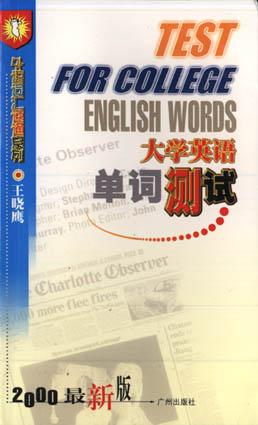

具體描述
著者簡介
Guangming Zhang obtained a bachelor degree and a master degree, both in Mechanical
Engineering, from Tianjin University, the People's Republic of China. He obtained a
master degree and a Ph.D. degree in Mechanical Engineering from the University of
Illinois at Urbana-Champaign. He is currently an Associate Professor in the Department
of Mechanical Engineering and Director of the Advanced Design and Manufacturing
Laboratory at the University of Maryland at College Park. He holds ajoint appointment
with the Institute for Systems Research.
Professor Zhang worked at the Northwest Medical Surgical Instruments
Factory in China where he served as a principal engineer to design surgical instruments
and dental equipment. He also taught at the Beijing Institute of Printing and received the
National Award for Outstanding Teaching from the Press and Publication Administration
of the People's Republic of China in 1987. In 1992, he was selected by his peers at the
University of Maryland to receive the Outstanding Systems Engineering Faculty Award.
Also in 1992, he was a recipient of the Blackall Machine Tool & Gage Award of the
American Society of Mechanical Engineers. He was the recipient of the E. Robert Kent
Outstanding Teaching Award of the College of Engineering in 1993. In 1995 and 1997,
he received Awards of Commendation from the Society of Manufacturing Engineers,
Region 3, for his outstanding service as the Faculty Advisor to the SME Student Chapter
at College Park.
He has actively participated in the NSF sponsored ECSEL grant since 1990. He
currently serves as the principal investigator for this grant at the University of Maryland,
and coordinates the ECSEL sponsored projects on integration of design, on active
learning and hands-on experiences, and on developing methods for team learning. He is
an Associate Editor of the International Joumal of Advanced Manufacturing Systems,
and a member of the editorial board of the International Journal of Flexible Automation
and Integrated Manufacturing. He has written about 90 technical papers, published one
book and holds one patent.
圖書目錄
INTRODUCTION TO QUALITY MANAGEMENT IN SYSTEMS
1.1 HlSTORY OF QUALITY CONTROL
1.2 THE NEED FOR STATISTICAL QUALITY CONTROL (SQC)
1.2.1 Definition of Quality
1.2.2 Fundamental Principles of Quality
1.3 QUALITY THROUGH SYSTEMS ENGINEERING
1.3.1 Definition of a S ystem
1.3.2 Systems Engineering Process
1.4 MEASUREMENT PARAMETERS FOR SYSTEMS ENGINEERING AND SQC
1.4.1 Cost
1.4.2 Time
1.4.3 Performance/Quality
1.4.4 Resources
1.4.5 Business Policy
1.4.6 Customer Satisfaction
1.5 HUMAN FACTORS AND QUALITY
1.6 QUALITY SYSTEMS
1.6.1 Deming
1.6.2 The Malcolm Baldrige National Quality Award
1.6.3 ISO9000
1.7 QUALITY MANAGEMENT
1.8 ASSIGNMENT PROBLEMS
1.9 BlBLIOGRAPHY
CHAPTER 2
DETAILS OF QUALITY MANAGEMENT IN SYSTEMS
2.1 INTRODUCTION
2.2 TOTAL QUALITY MANAGEMENT AND DEMING'S 14 POINT PROGRAM
2.2.1 TheWayofThinking
2.2.2 Ways of Producing and Conducting Business
2.2.3 Ways of Cultivating Employees
2.2.4 Ways of Organizing and Managing
2.3 THE MALCOLM BALDRIGE NATIONAL QUALITY AWARD
2.3.1 Evaluation System
2.3.2 Benefits
2.3.3 Qualifications
2.3.4 Total Quality Management
2.4 ISO 9000 REGISTRATION
2.5 COMPARISON OF THREE QUALITY CRITERIA
2.6 SUMMARY
2.7 ASSIGNMENT PROBLEMS
2.8 BlBLIOGRAPHY
CHAPTER 3
FUNDAMENTALS OF ENGINEERING STATISTICS
3.1 INTRODUCTION
3.2 PROCESS VARIATIONS
3.3 CHARACTERIZATION OF DATA
3.3.1 The Histogram: A Graphical Representation of the Distribution
3.3.2 Characteristics ofData: Mean, Variance, and Standard Deviation
3.4 PROBABILITY DlSTRIBUTIONS
3.4.1 Discrete Distributions
3.4.2 Continuous Distributions
3.4.3 Central Limit Theorem
3.4.4 Linear Operator
3.5 THE STUDENT T-DlSTRIBUTION
3.6 SUMMARY
3.7 ASSIGNMENT PROBLEMS
3.8 BlBLIOGRAPHY
3.9 APPENDIX
CHATPER 4
STATISTICAL PROCESS CONTROL
4.1 INTRODUCTION
4.2 ASSESSMENT OF PROCESS CAPABILITY
4.3 CONTROL CHARTS
4.4 ACCEPTANCE SAMPLING
4.4.1 Conflict of Interest
4.4.2 Design of a Sampling Process
4.4.3 The Operating Characteristic Curve
4.5 ACCEPTANCE PLANS USING DOUBLE SAMPLING
4.6 DODGE-ROMIG INSPECTION SYSTEM
4.7 LTPDANDAOQL
4.7.1 The LTPD System
4.7.2 TheAOQLPlan
4.7.3 Computations
4.7.4 Advantages and Disadvantages of the Dodge-Romig System
4.8 ANSI/ASQC Z1.4-1981 CIVILIAN STANDARD
4.8.1 Concepts
4.8.2 Advantages and Disadvantages of the ANSI/ASQC Zl .4
4.9 SUMMARY
4.10 ASSIGNMENT PROBLEMS
4.11 BlBLIOGRAPHY
4.12 APPENDIX
CHAPTER 5
ANALYSIS OF DATA
5.1 CONFIDENCE INTERVALS
5.2 SlGNICANCE TESTS
5.3 COMPARISON OF TWO TREATMENTS
5.3.1 Principle ofBlocking
5.3.2 Principle of Randomization
5.4 COMPARISON OF MORE THAN TWO TREATMENTS
5.4.1 Analysis of Variance
5.4.2 Latin Square Design
5.5 ASSIGNMENT PROBLEMS
5.6 BIBLIOGRAPHY
APPENDIX - F DISTRUTION TABLES
CHAPTER 6
DESIGN OF EXPERIMENTS
6.1 FACTORIAL DESIGN AT TWO LEVELS
6.2 CALCULATION OF THE MAIN AND INTERACTION EFFECTS
6.3 DERIVATION OF AN EMPIRICAL MODEL
6.4 ERROR ESTIMATIONS
6.4.1 Use of Replicated Runs for Error Estimation
6.4.2 Error Estimation from Higher-Order Interactions
6.5 FRACTIONAL FACTORIAL DESIGN AT Two LEVELS
6.5.1 Linear Combinations
6.5.2 General Class of 2k-p Fractional Factorial Designs
6.5.3 Design Generator and the Defining Relation
6.6 ASSIGNMENT PROBLEMS
6.7 BlBLIOGRAPHY
CHAPTER 7
MODEL BUILDING
7.1 REGRESSION
7.2 RESPONSE SURFACE METHOD
7.3 ASSIGNMENT PROBLEMS
7.4 BlBLIOGRAPHY
· · · · · · (收起)
讀後感
評分
評分
評分
評分
用戶評價
相關圖書
本站所有內容均為互聯網搜索引擎提供的公開搜索信息,本站不存儲任何數據與內容,任何內容與數據均與本站無關,如有需要請聯繫相關搜索引擎包括但不限於百度,google,bing,sogou 等
© 2025 book.quotespace.org All Rights Reserved. 小美書屋 版权所有




















